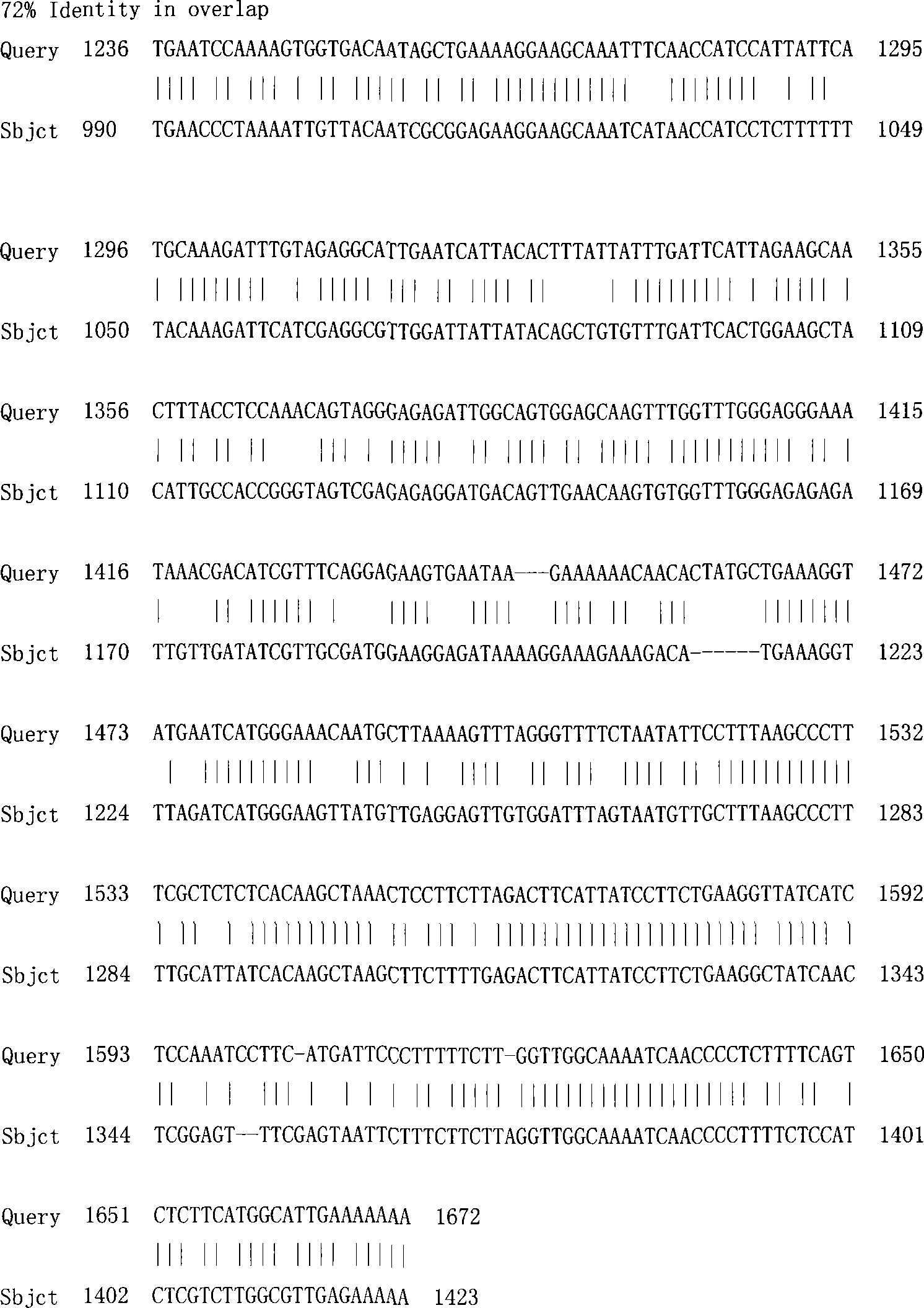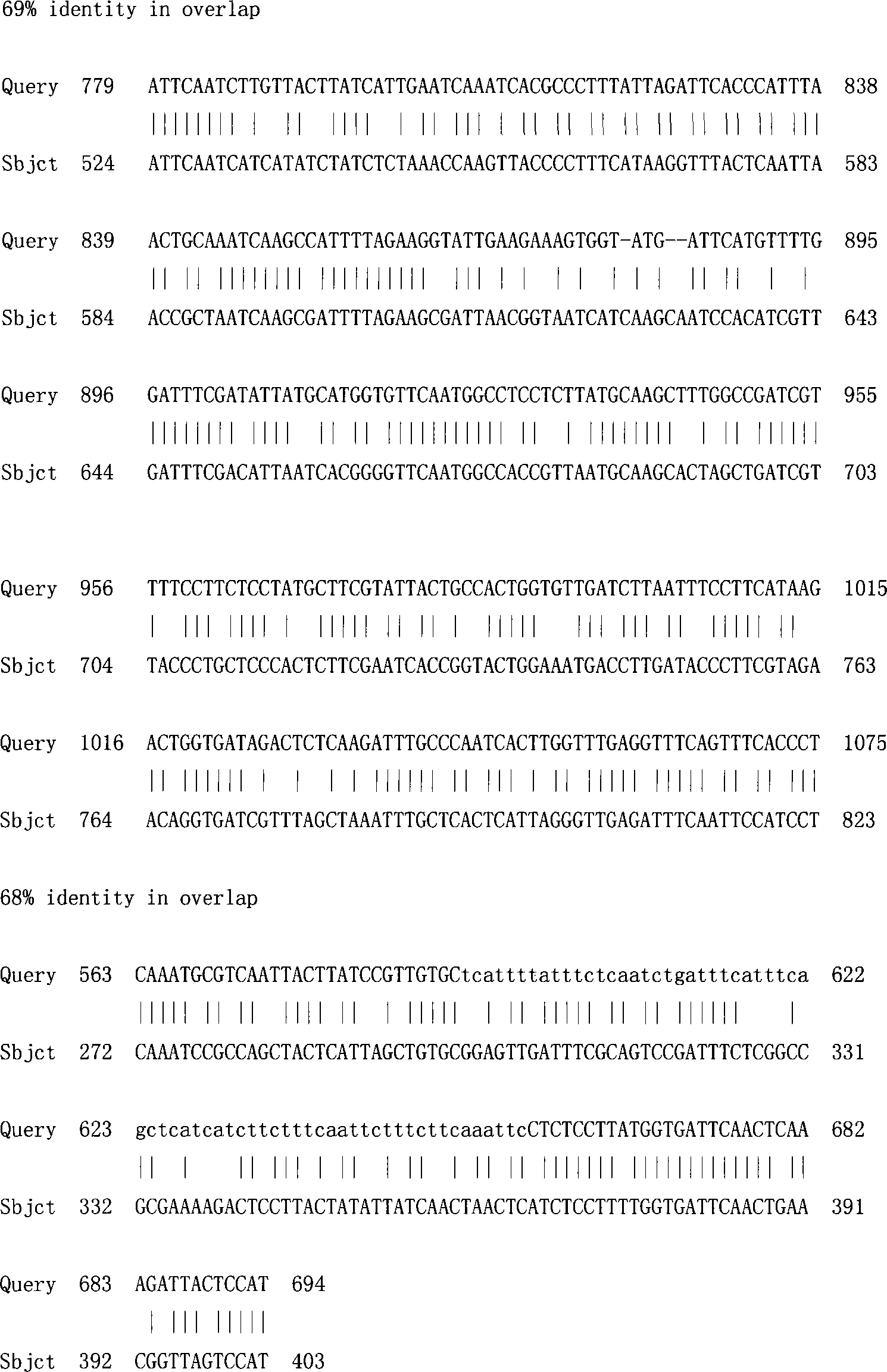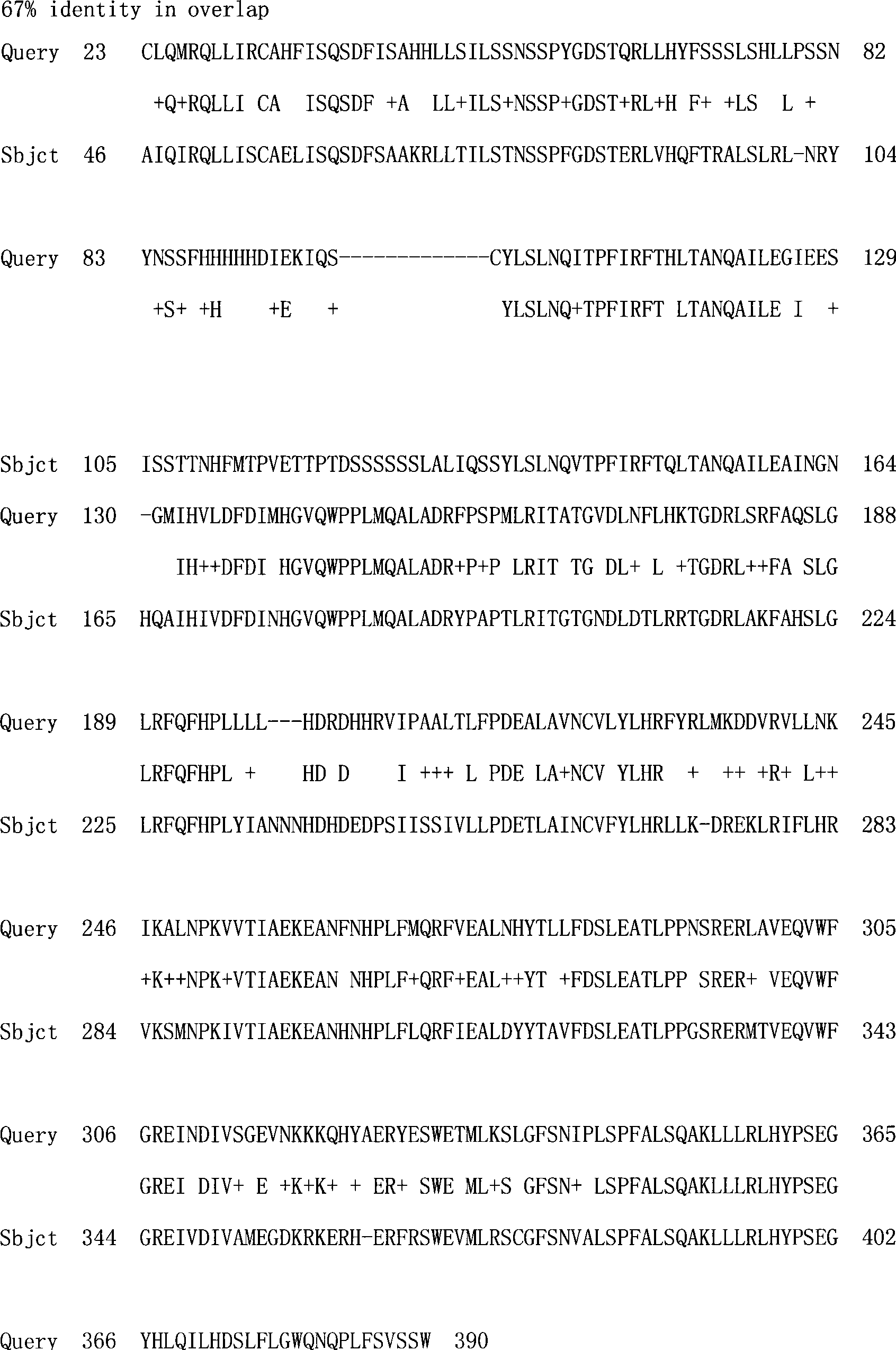Protein encoding sequence of cucumber side branch inhibition gene cls
A coding sequence, a technology for inhibiting genes, applied in the coding sequence field in the field of genetic engineering technology
- Summary
- Abstract
- Description
- Claims
- Application Information
AI Technical Summary
Problems solved by technology
Method used
Image
Examples
Embodiment 1
[0035] Cloning of Example 1 Cucumber Collateral Suppressor Gene
[0036] 1. Tissue separation (isolation)
[0037] Cucumber s06 is a European greenhouse variety collected in our laboratory. The cucumber was germinated at 28°C for 24 hours, and then sown in plug trays. After the two cotyledons of the cucumber were completely flattened, it took about a week to prepare for DNA or RNA extraction.
[0038] 2. RNA isolation (RNA isolation)
[0039] Take part of the tissue, grind it with a mortar, add it to a 1.5mL EP tube filled with lysate, shake it fully, and then transfer it into a glass homogenizer. After homogenization, transfer to 1.5mL EP tube, and extract total RNA (TRIzol Reagents, GIBCO BRL, USA). The quality of total RNA was identified by formaldehyde denaturing gel electrophoresis, and then the RNA content was determined on a spectrophotometer.
[0040] 3. Cloning of Full-length cDNA
[0041] According to the nucleotide conserved sequence of Arabidopsis, tomato, and ...
Embodiment 2
[0052] Example 2 Sequence information and homology analysis of genes related to cucumber collateral suppression
[0053] The full-length cDNA of the new cucumber collateral suppressor gene in this example is 2175bp (SEQ ID NO.3), wherein the open reading frame is located at nucleotides 491-1666 (1175 nucleotides). According to the full-length cDNA, the amino acid sequence of the cucumber collateral suppressor gene is deduced, with a total of 391 amino acid residues, and the detailed sequence is shown in SEQ ID NO.3.
[0054] The full-length cDNA sequence related to the cucumber collateral suppressor gene and its encoded protein were compared in the Non-redundant GenBank+EMBL+DDBJ+PDB and Non-redundant GenBank CDStranslations+PDB+SwissProt+Superdate+PIR databases using the BLAST program. Protein homology search, it was found that it has homology with tomato collateral suppressor gene (AF098674) only in some nucleotide segments (attached table 2), and has 67% identity at the ami...
Embodiment 3
[0067] The subcellular localization of embodiment 3cls gene
[0068] The functions of GRAS family protein members are transcription factors, based on the discovery that some GRAS members, such as RGA and SLR1, have nuclear localization signals. However, analysis with molecular biology software (pSORT, http / / psort.nibb.ac.jp) showed that CLS has no transmembrane region. In order to determine whether CLS is localized in the nucleus, a fusion protein containing green fluorescent protein GFP was constructed: CLS -GFP, constructed into the chronological expression vector PA-7. Bombarded into the epidermis of the onion with a gene gun, cultured in the dark at 24°C for 36 hours, and then observed with a laser confocal microscope. Results The green fluorescent signal was mainly detected in the nucleus, indicating that CLS was localized in the nucleus, presumably a transcription factor.
PUM
 Login to View More
Login to View More Abstract
Description
Claims
Application Information
 Login to View More
Login to View More - R&D
- Intellectual Property
- Life Sciences
- Materials
- Tech Scout
- Unparalleled Data Quality
- Higher Quality Content
- 60% Fewer Hallucinations
Browse by: Latest US Patents, China's latest patents, Technical Efficacy Thesaurus, Application Domain, Technology Topic, Popular Technical Reports.
© 2025 PatSnap. All rights reserved.Legal|Privacy policy|Modern Slavery Act Transparency Statement|Sitemap|About US| Contact US: help@patsnap.com



